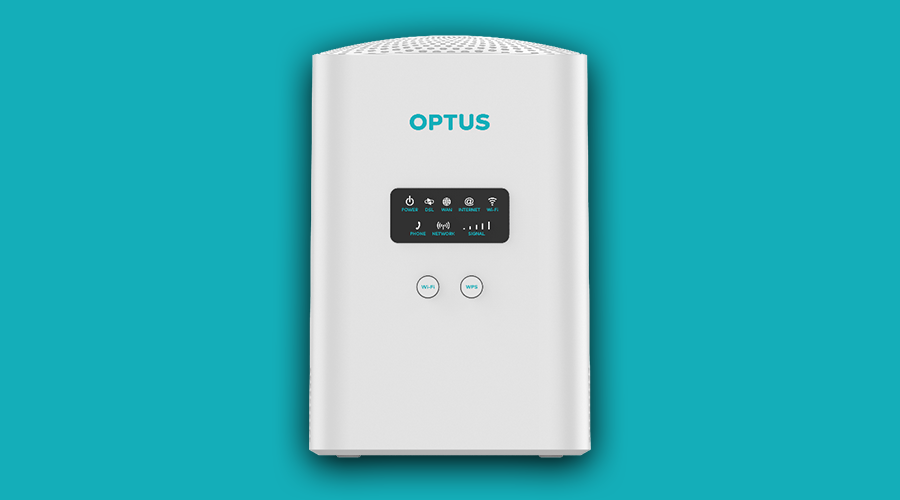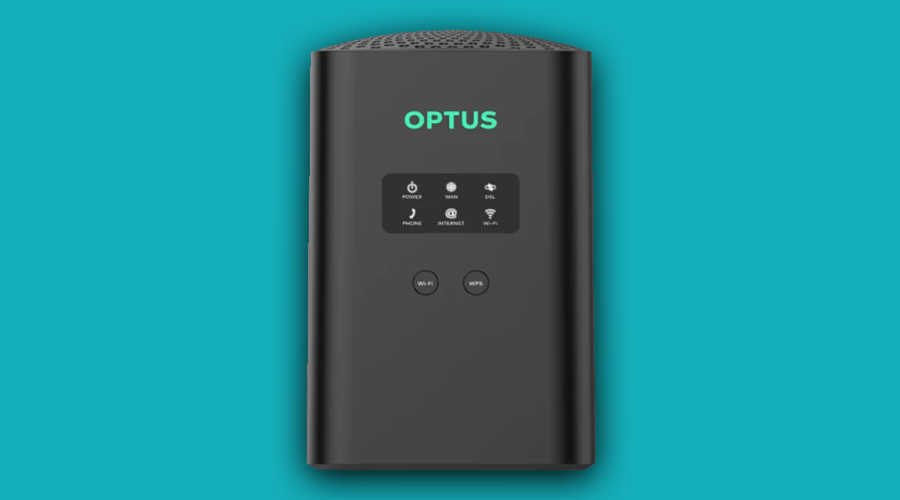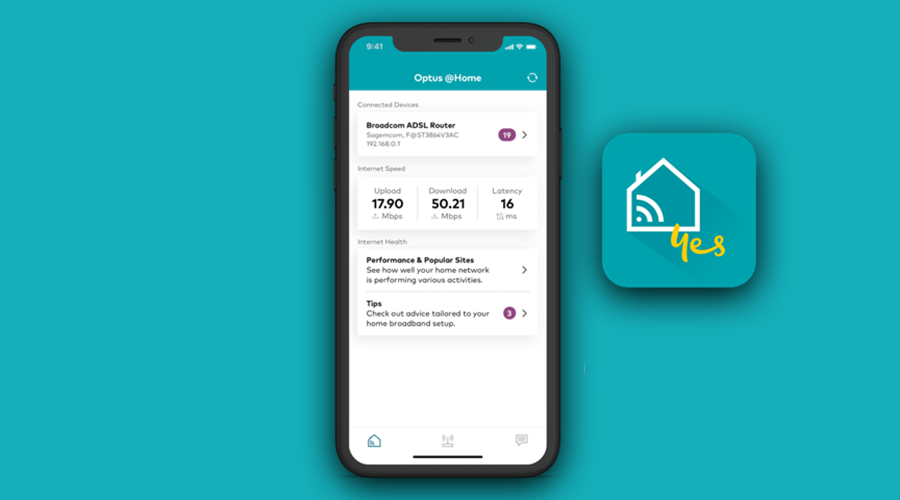When your Optus NBN internet is down, read through our list of tips to help get back online.
How to troubleshoot and fix Optus NBN internet issues
If you’ve run into Optus internet issues, then you’ve come to the right place. Sure, you can jump straight ahead to contacting technical support if your Optus connection is down or slow, but there are some steps you can take beforehand.
These steps may help you get back online, or they may help eliminate troubleshooting possibilities if you do have to reach out to Optus technical support.
Please note that while this guide is specific to Optus NBN internet problems, many of these steps are also applicable to Optus Cable and Optus DSL.
If you reach the bottom of this guide and still don't see an improvement in speed or stability, it might be time to switch NBN providers. Head over to our monthly round-up of the best NBN plans available to check out your alternatives.
Not with Optus? Check out our comprehensive guide for steps to take when you've got slow or no internet connection.
How fast is your internet?
If you're experiencing speed-related Optus internet issues, you need to identify what type of broadband plan you are on (e.g. ADSL, Home Wireless, Mobile, or NBN) and what the expected speeds are on that plan. Below is a list of fast NBN plans, and the type of speeds you can expect on them. If you're on a slow NBN plan, it might be worth upgrading to a faster plan.
Optus modem and networking issues
Optus currently supplies two main “modems” (really, they’re both modem-routers), both of which support Optus NBN, Optus Cable, Optus DSL, and Optus DSL Direct connections: the Optus Ultra WiFi modem and the Sagemcom F@ST 5366 TN. To help with troubleshooting, it’s worth sticking with these provided modem-routers.
Previously, Optus has supplied other networking devices, which are still approved for NBN use. There are three from Sagemcom – the F@ST 3864V3 OP, F@ST 3864V3 AC, and F@ST 3864 – and the Netgear EVG2000.
The big difference between the Optus Ultra WiFi modem and the Sagemcom F@ST 5366 TN is that the Optus-branded modem offers 4G backup (up to 25Mbps download and 2Mbps upload) in the event of a fixed-line network outage, while the Sagemcom does not.
If you’re an Optus Wireless Broadband user, supported networking devices are the Huawei B818 and Netgear AC800S.
Optus also lists minimum computer requirements for fixed broadband connections. This amounts to a PC that’s running Windows 7 with Service Pack 1 and/or a Mac with macOS X 10.10 (Yosemite). Both computer options should have a working Ethernet port or WiFi connection.
Optus Ultra WiFi Modem

There’s no online manual for the Optus Ultra WiFi Modem, the current top-of-the-line option from Optus, which means that in-depth troubleshooting is difficult. There is, however, a quick-start guide for initial setup. By default, you can use a web browser to update your WiFi network name and password by typing the Optus modem IP http://192.168.0.1 into the address bar for the default Optus modem login address.
You can find a list of default Optus modem passwords here.
That said, like Telstra NBN equipment, there are some basics to understanding what the lights on the Optus modem-router mean.
Optus Ultra WiFi modem lights
The lights on the Optus Ultra WiFi Modem are for Power, DSL, WAN, Internet, Wi-Fi, Phone, Network, and Signal. Note that not all of these lights will necessarily display, depending on the type of NBN technology type used to connect your home. The DSL light, for instance, is applicable to Fibre-to-the-Node and Fibre-to-the-Building/Basement NBN connections.
There are also buttons for WiFi and WPS on the front. The WiFi button will enable and disable your WiFi network, so it’s best not pressed unless the light is off. The WPS button is there to facilitate speedier connection of new wireless devices on your network.
Sagemcom F@ST 5366 TN

This modem-router only has lights for Power, WAN, DSL, Phone, Internet, and Wi-Fi. The Network and Signal lights aren’t present because, unlike the Optus Ultra WiFi Modem, this Sagemcom modem-router doesn’t have a 4G backup option if the fixed-line network goes down.
Once again, there’s no online manual to explore specifics of the networking device, but Optus does offer a quick-start guide for initial setup.
Initial setup by NBN technology
Optus has specific steps and an instructional video for the NBN connection types that it offers.
Optus advanced network settings
Optus also has a page dedicated to specific computer and network configuration options that may help you get online.
These generic settings are intended for FTTP, FTTN, FTTB, FTTC, HFC, and Fixed Wireless:
- Encapsulation: PPPoE
- Authentication Method: CHAP or PAP
- Connection Type: Ethernet WAN (FTTP and Fixed Wireless); VDSL2 Annex B with Vectoring (FTTN, FTTB, FTTC)
There are also specific settings for FTTN, FTTC and FTTB connections:
- Modulation: VDSL2 Annex B (G.993.2)
- VDSL2 Profiles: 17a and 30a
- VDSL2 PVC VPI/VCI: Auto or PTM
- G.INP/G998.4: Enabled
- G.Vector/G.993.5: Enabled
- SRA (Seamless Rate Adaptation): Enabled
- VLAN ID: Disabled/None
Finally, if you want to manually tinker with Optus DNS settings:
- Primary DNS: 198.142.152.164
- Secondary DNS: 198.142.152.165
Optus @Home app

Optus advises you install the Optus @Home app on your iOS or Android smartphone or tablet for tailored advice that’s specific to your connection type. Outside of this, the app can also be used to configure your WiFi network, as well as see real-time networking diagnostic information, alongside the devices that are currently connected to your network.
Troubleshooting Optus internet outages
The following steps are applicable to Optus NBN or Optus Cable connections. If you are looking for Optus ADSL internet troubleshooting, visit this page.
The first step is to check for a network outage. Visit the Optus Check Network Status page, then click on the ‘Outages’ tab that’s in the top-right of the map. Click the ‘Fixed Outages’ box just below the ‘Outages’ tab, then type in your address to check for outage information.
Where relevant, there may be an option to report an outage if you suspect there’s one in your area. If there’s not a reported Optus network outage, ensure that your account isn’t overdue as this may lead to restricted internet.
It’s also worth checking NBN’s Network outages page to see if there is any current or upcoming maintenance in your area that may impact your internet connection.
If there’s no outage, follow these next steps.
Step 1: Power cycle your modem-router
Optus advises physically removing the power cable from the back of your modem-router, but you can also just turn the power off at the wall outlet instead. Either way, leave the modem-router off for 60 seconds, then reconnect the power cable or flip the power switch back on. It takes up to two minutes for your modem-router to be fully powered on, which should result in the lights settling into a stable pattern.
If not, let’s move on.
Step 2: Checking NBN equipment
This step is really only necessary for homes with FTTC, HFC, FTTP or Fixed Wireless connections. Check all cabling is connected correctly for any NBN equipment in your home, which includes power, Ethernet, as well as phone and/or coaxial cables (securely screwed in).
FTTC modem check
This is also known as the Connection Box and it works as a modem for sending and receiving internet traffic. The Connection light should be solid blue. Flashing blue means it’s configuring. If there’s a solid or blinking red light, contact Optus technical support.
The DSL and Internet lights should be solid blue, with blinking blue indicating that it’s configuring your NBN connection. If there’s no light, contact Optus technical support.
The LAN light should be blinking blue to indicate a connection to your Optus modem-router or other external router. You want to ensure that the Ethernet cable from your Connection Box is connected to the port on your router or modem-router that’s marked ‘WAN’ or ‘Internet’.
HFC modem check
Optus also calls this connection type “nbn™ Cable”, and it also involves a modem that’s called a Connection Box. All of the lights on this Connection Box should be steady green. If the Online light is off and the Downstream (DS) and Upstream (US) lights are flashing, there’s no internet connection and you should contact Optus technical support.
If the Online light is on with the DS and US lights flashing, this means the Connection Box is automatically updating its firmware. Optus advises you to wait up to 30 minutes for the update to complete. The lights should then return to steady green.
Speaking of firmware, Optus modem firmware updates are pushed out automatically.
FTTB modem check
This particular NBN Connection Box (modem) has its lights hidden behind the cover. If you can’t see any lights, press the two clips at the base of the Connection Box upwards, then slide the cover towards you and up to remove it.
What you want to see are solid green lights for the Power and Optical indicators. Flashing green on Power means the Connection Box is starting up, which may take up to 15 minutes to fully finish configuration. A red Power light means it’s running on battery. No Power light means either the wall outlet is off or there’s something wrong with the Connection Box. For the latter, contact Optus technical support.
The Optical light should be either solid green or flashing green (flashing means it’s sending data). If the Optical light is red or off, it means the modem has lost its connection and you should contact Optus technical support.
Fixed Wireless modem check
If your Fixed Wireless Connection Box is working normally, you should see solid or flashing green lights for Power, Status and Outdoor Unit (ODU) indicators. Flashing green lights indicate activity.
If the Power light is red, it means the Connection Box is operating on low battery power. If it’s off, check the power is connected correctly and switched on.
If the Status indicator is red, power down the Connection Box, then power it back on after 30 seconds. It will take a few minutes to properly reboot, during which time you’ll likely notice a blinking amber light that is normal when the device is starting up.
If the ODU light is solid red, power it off for 30 seconds, then turn it back on. If the light returns to red after a few minutes or if it’s blinking red, contact Optus technical support.
The Signal Indicator light displays signal strength in terms of green (good), amber (okay), or red (weak). In this instance, a red light doesn’t indicate a problem with the Connection Box.
Step 3: Check Optus equipment
Whether you’re using networking equipment provided by Optus or your own BYO gear, check that the Internet light on your router or modem-router is solid or blinking. If it’s off and you’ve confirmed that the Ethernet cable between your Connection Box and router/modem-router is connected correctly, try another cable. If it stays off after a power cycle, contact Optus technical support.
If the Internet light is on, it’s time to check your WiFi connection.
Step 4: Check WiFi connection
Start with the Optus @Home to test your in-home WiFi speed, signal strength and any potential latency issues, which may help explain why your Optus internet speed is slow.
After this, check the WiFi light on your router or modem-router. If it’s off, check for a corresponding button (which may even be the light) to enable/disable it.
If the WiFi light is on but your devices still can’t connect, power cycle the router or modem-router by powering it off for 60 seconds. You should also restart or power cycle any devices that are having trouble connecting, but do this after the router or modem-router has restarted.
Still no ’net? Try an Ethernet connection from a computer to your modem-router or router. If that connects, contact Optus (for networking equipment it’s provided) or your networking device vendor for advice on tweaking your WiFi setup.
If none of these steps work, contact Optus technical support and let them know what troubleshooting you’ve already performed. Optus prefers that you have an Ethernet connection directly from a computer to your modem or modem-router to assist with troubleshooting tests.
Related Articles




